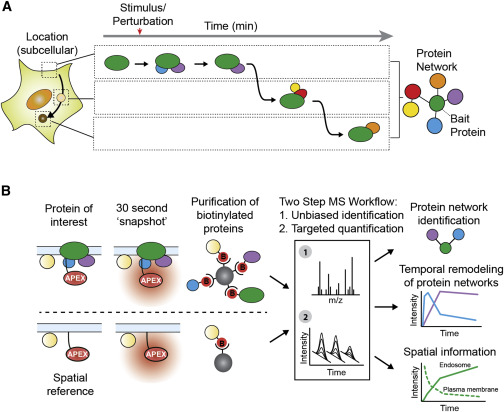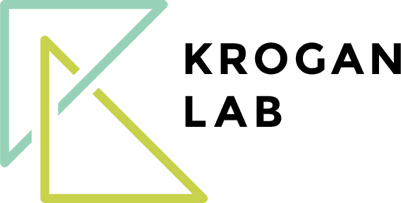For this approach the protein of interest is fused to a peroxidase (ascorbic acid peroxidase; APEX). Upon treatment with H2O2, APEX converts exogenously supplied biotin-phenol to biotin-phenoxyl radicals, which results in a covalent labeling of protein in a radius of 20nm. Subsequently, the biotinylated proteins are enriched using Steptavidin. This technology allows for the first time to take ‘snapshots’ of local protein environments at a given time and to capture transient protein interactions. Proximity-based labeling approaches have advanced rapidly in the last several years and have been shown to provide complementary results to traditional affinity-based purification methods (AP-MS), thus having the potential to open entirely new avenues of research and provide novel insights into protein functions.

APEX has been used to capture entire organelle proteomes with high temporal resolution, but its breadth of labeling is generally thought to preclude the higher spatial resolution necessary to interrogate specific protein networks. We recently provided a solution to this problem by combining quantitative proteomics with a system of spatial references. This novel method allows us to resolve known binding partners, as well as previously unidentified network components, as recently shown in a proof of principle study interrogating proteins engaged by G-protein-coupled receptors as they dynamically signal and traffic in response to ligand-induced activation.
